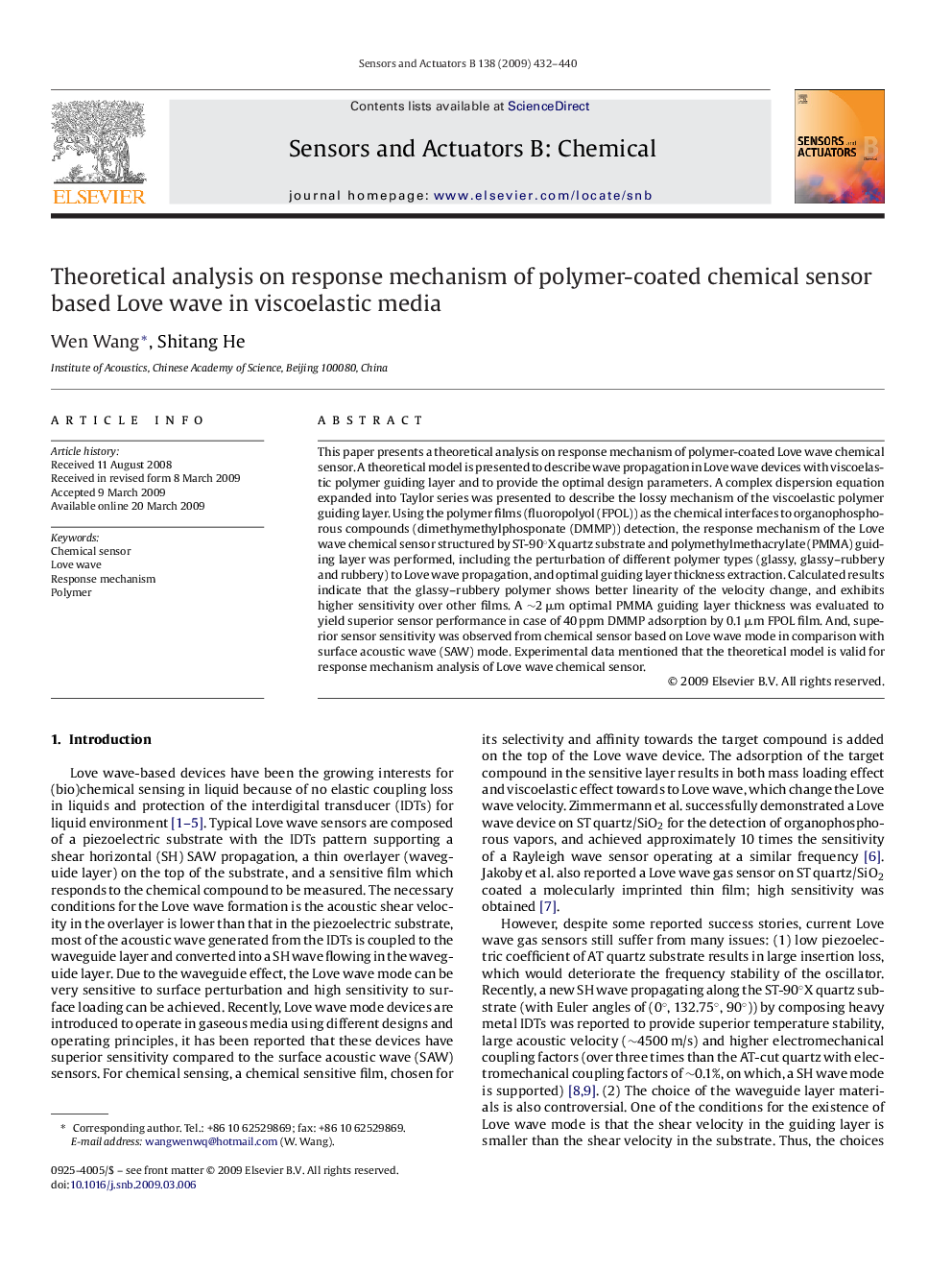| Article ID | Journal | Published Year | Pages | File Type |
|---|---|---|---|---|
| 751501 | Sensors and Actuators B: Chemical | 2009 | 9 Pages |
This paper presents a theoretical analysis on response mechanism of polymer-coated Love wave chemical sensor. A theoretical model is presented to describe wave propagation in Love wave devices with viscoelastic polymer guiding layer and to provide the optimal design parameters. A complex dispersion equation expanded into Taylor series was presented to describe the lossy mechanism of the viscoelastic polymer guiding layer. Using the polymer films (fluoropolyol (FPOL)) as the chemical interfaces to organophosphorous compounds (dimethymethylphosponate (DMMP)) detection, the response mechanism of the Love wave chemical sensor structured by ST-90°X quartz substrate and polymethylmethacrylate (PMMA) guiding layer was performed, including the perturbation of different polymer types (glassy, glassy–rubbery and rubbery) to Love wave propagation, and optimal guiding layer thickness extraction. Calculated results indicate that the glassy–rubbery polymer shows better linearity of the velocity change, and exhibits higher sensitivity over other films. A ∼2 μm optimal PMMA guiding layer thickness was evaluated to yield superior sensor performance in case of 40 ppm DMMP adsorption by 0.1 μm FPOL film. And, superior sensor sensitivity was observed from chemical sensor based on Love wave mode in comparison with surface acoustic wave (SAW) mode. Experimental data mentioned that the theoretical model is valid for response mechanism analysis of Love wave chemical sensor.
